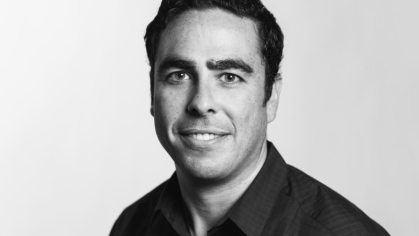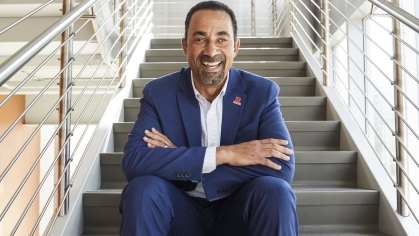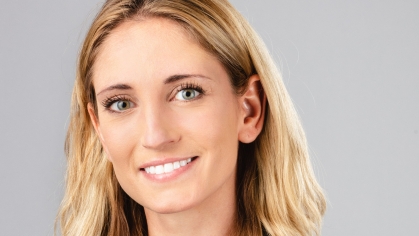“Stay alert. Stay inquisitive. Stay open to new challenges and opportunities. Embrace change. And don’t be fearful.” – Peter Schultz
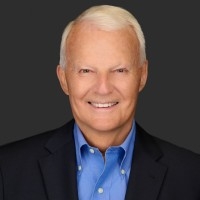
Imagine life today without the internet, wi-fi, cable television, and high-speed telecommunications and data transfer – all of which are possible thanks to fiber optics. And it is thanks to Peter Schultz, who after earning both his School of Engineering bachelor's and doctoral degrees in ceramics engineering, joined Corning where he co-invented the fiber optics used for telecommunications. Today, the more than 2.5 billion miles of fiber optic cable worldwide are based on his original materials and process patents. An internationally celebrated scientist, he holds 26 U.S. patents and numbers election to the National Academy of Engineering, induction into the National Inventors Hall of Fame, the National Medal of Technology, and a technical Emmy Award among his many honors. Prior to serving as president of a subsidiary of German telecom, semiconductor, and optics company Heraeus Inc. USA, he was vice president of technology at SpecTran Inc, and a senior scientist at Corning during his nearly 60-year career. Since retiring in 2001, international companies have called on him at Peter Schultz Consulting, LLC for expert advice. He is a member of the Rutgers Alumni Hall of Fame, and a Rutgers Engineering Alumni Distinguished Engineer. He has recently given personal memorabilia from his storied career to the SoE, where it will be featured in a permanent display.
What does the Medal of Excellence Distinguished Engineer Award mean to you?
I’m very proud and honored to receive this award because it comes from my alma mater and to an engineer from an engineering community.
Why Rutgers?
Growing up, I hadn’t taken to scholastics and was more impressed by Elvis Presley. I was kind of a mediocre student. When my mother and I met with a career advisor, we were told I wasn’t really college material and should think about vocational school. My mother had dreamed I’d go to college, and I remember how hurt she was. It was a wake-up call for me and I realized I had better work harder: I didn’t want to disappoint her.
What sticks in your mind from your undergraduate years?
I was scared to death! There was an undercurrent of fear and insecurity and desire to do the best I could to please myself and my parents. Each year I felt a little more confident and knew I would make it.
Why ceramics engineering?
There were some exhibits in a building on the old campus that freshmen looked at when picking a major. The ceramics science exhibit attracted my attention with a nose cone and rocket nozzle from a Nike missile.
What do you most value about your SoE education?
I gained confidence from my undergraduate professors, Malcolm McLaren and John Koenig and graduate advisors C.J. Phillips and Norbert Kreidl, through their support, encouragement, and their guidance.
I had joined ROTC because I got an additional allowance, that supplemented my scholarships, not thinking about the ramifications when graduating – I’d be a 2nd lieutenant and sent to Vietnam and possibly get killed. One day, professors Koenig and McLaren told me they had a surprise for me.
They’d put my name in for a National Science Foundation (NSF) fellowship for grad school. All expenses were paid, plus a stipend. I would skip the master’s degree and finish my PhD in three years. That amazed me: I was an okay student. But they saw something in me I didn’t see and went to this effort on my behalf to keep me at Rutgers.
How did your doctoral experience lead you to Corning?
I had to pick my thesis topic. I worked for a ceramics department technician and helped him make chemical batches and melt glass.
Glass is an interesting material, and this triggered me to move down that path of glass technology. We were making glass with as much iron in it as we could, which makes it black and opaque. Fooling around, I made the accidental discovery that with even more iron, the glass also becomes magnetic, even though it isn’t supposed to. So, my thesis involved my growing lithium ferrite crystals in a glass matrix.
From my accidental discovery, and funding to pursue my PhD rather than go to Vietnam, I got the nickname of “Serendipity Schultz.”
How did you get on the fiber optics team at Corning?
When I got to Corning as a young scientist, they put me in exploratory research, just to see what I could do.
How could you make glass rather than by melting chemicals but by instead exploring new types of silica glass made through a doped vaporization process?
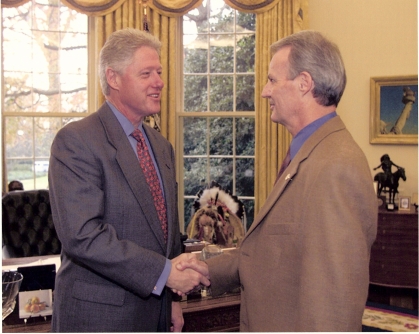
Two years into that, the physics department wanted my help in making glasses for fiber optics for communication. The newly invented laser could revolutionize communication by transmitting more information in a unit of time than copper wire.
Did I plan to invent fiber optics? No. Did I end up on that path? Yes.
Labs all around the world were working on trying to make a fiber optic pure enough to transmit signals. Our team used the vapor deposition process, and it took about five years .
Its composition, design, and vaporization process revolutionized communications. And we beat everyone else in the world and opened the door: Today, there are about 4 to 5 billion kilometers of it around the world, with another 500 million more added each year.
How have global fiber optics networks shaped our world?
Three things happened in the mid-1990s. First, telephone and cable providers were installing fiber optics around the world, building a high-capacity core network for telecommunications. Second, the personal computer, and third, user-friendly software and a little mouse you could point and click to do things. Combined, they allowed the internet to be created.
Fiber optics is a key enabler in the global communications we enjoy today. Take any of these three things away, and the whole thing collapses.
What advice do you have for today’s engineering students?
Stay alert. Stay inquisitive. Stay open to new challenges and opportunities. Embrace change. And don’t be fearful.
What do you most enjoy in your free time?
I’m not as physically active as I’ve been in the past, when I jogged and climbed all 46 mountains higher than 4,000 feet in the Adirondacks. What I enjoy most now is my consulting work, which keeps me mentally stimulated, and reading history books. I enjoy daily meditation, which has been a peaceful and important daily part of my life for some time.
